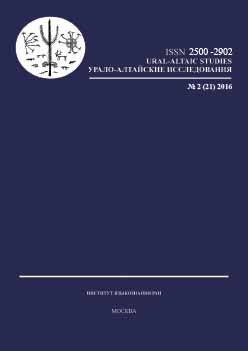Надписи и тамги горы Дэл-ула (к речевым и культурным особенностям Центральной Монголии в VIII—X вв.)
Inscriptions and tamgas of the Del-ula mountain (towards the speech and cultural peculiarities of the Central Mongolia in the VIII—Xth centuries)
Author(s): Igor L. KyzlasovSubject(s): Semiotics / Semiology, Middle Ages, Theology and Religion, Sociolinguistics, Finno-Ugrian studies, Sociology of Culture, Philology
Published by: Институт языкознания Российской академии наук
Keywords: Mongolia; Turkic runology; Yenisei epigraphy; rock inscriptions; Turkic Manichaeism; tamgas of the VIII—IXth centuries; features of the local speech of the IX—Xth centuries;
Summary/Abstract: There are three chronological groups of inscriptions on the Del-ula mountain in Mongolia. Most ancient ones are from Bronze Age; beyond that, at the different times in Middle Ages were inscribed, firstly, three families’ tamgas of the VIII—IXth centuries; secondly, near them, a single author has put two runic inscriptions in the Altai variant of the Yenisei alphabet in the IX—Xth centuries. Their contents can be interpreted as Manichaean; in this case, they tell about a repentance of a soldier having killed animals on hunting and about a gratitude to god for disposal of diseases. It can be further assumed that the author of the inscriptions was a preacher, who knew a common plot about the discussion (disastrous for the prophet Mani) between Mani and the shahanshah Varahran I in 276 and intentionally connected in his inscriptions the two subjects of the triumphing Manichaeism — the victorious doctoring and the humbled military or hunting valour. Spelling of the words täŋiri and altїmїš manifests some dialect features of the local speech, possibly Kirghiz.
Journal: Урало-алтайские исследования
- Issue Year: 2016
- Issue No: 02 (21)
- Page Range: 83-96
- Page Count: 14
- Language: Russian

